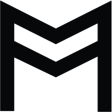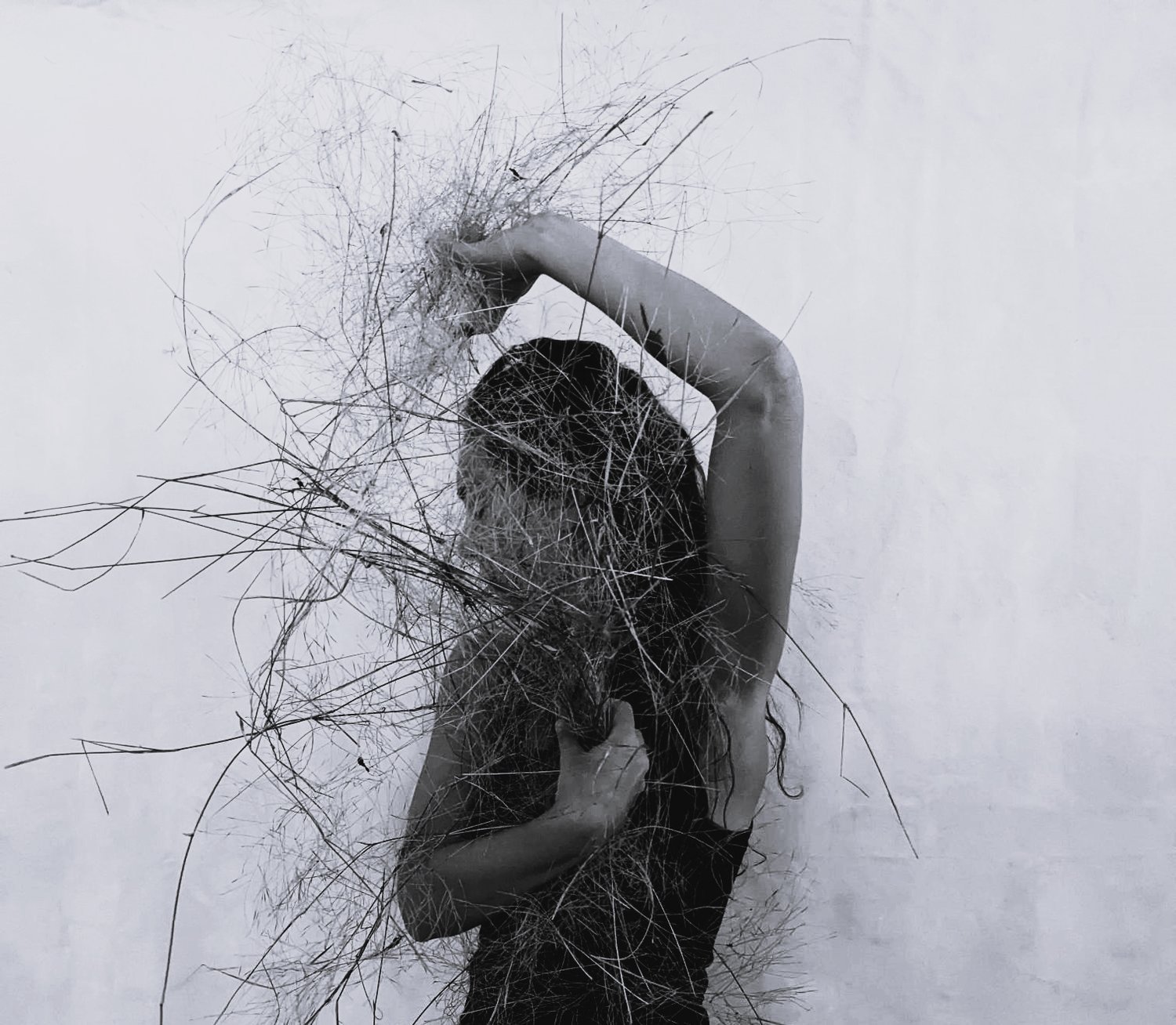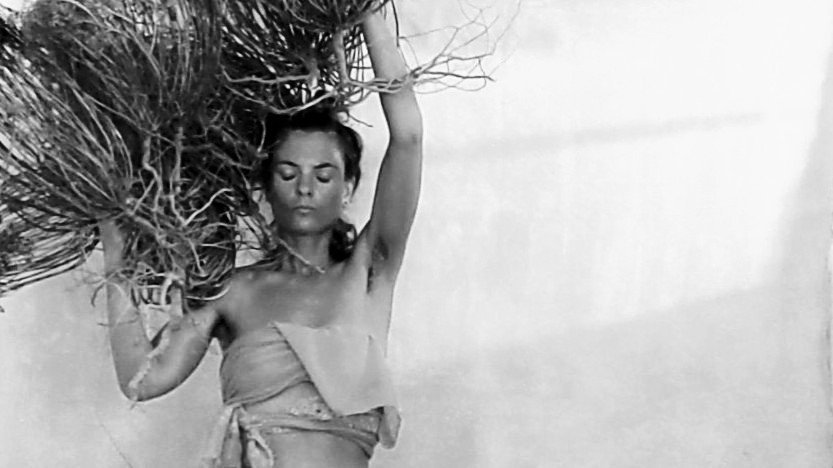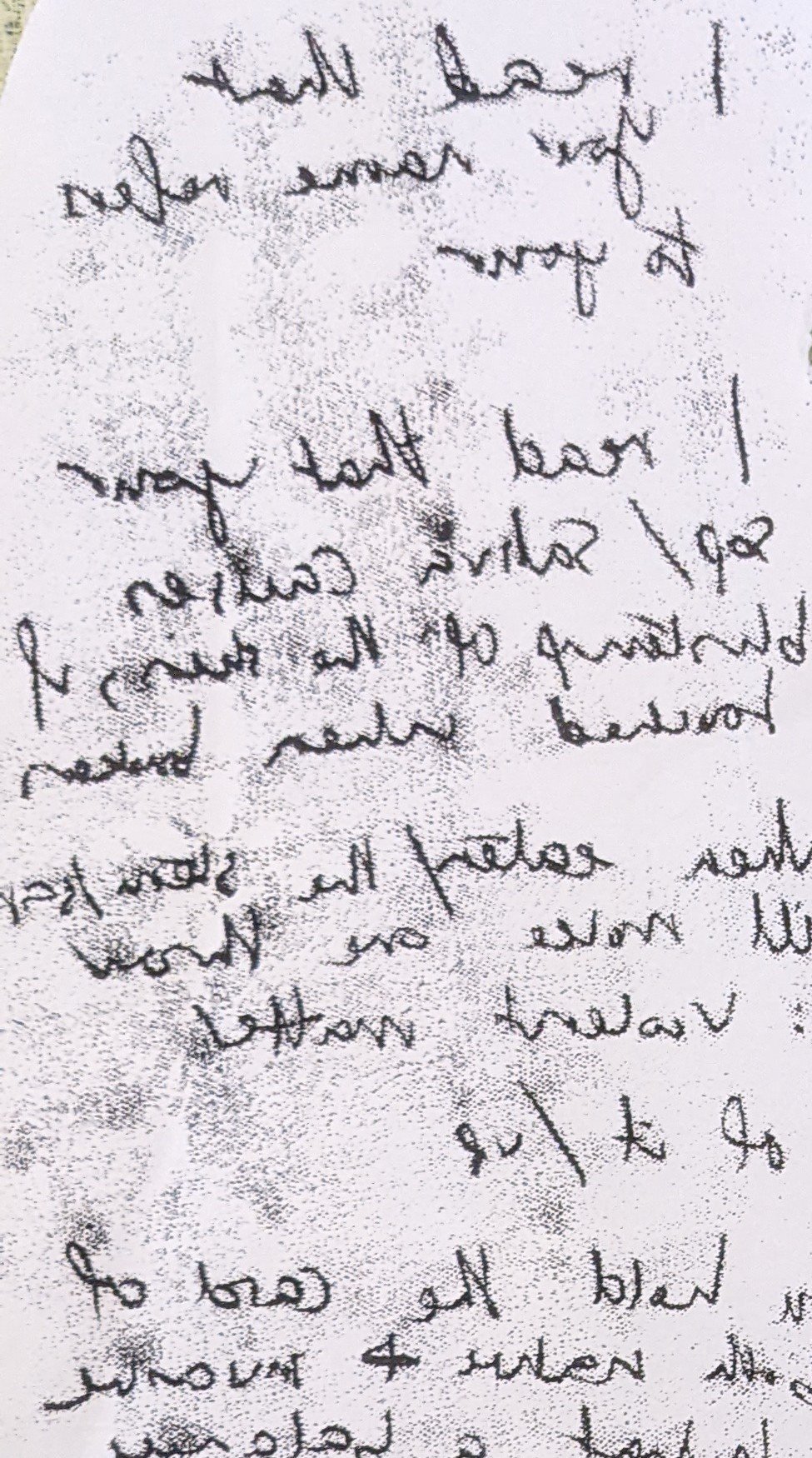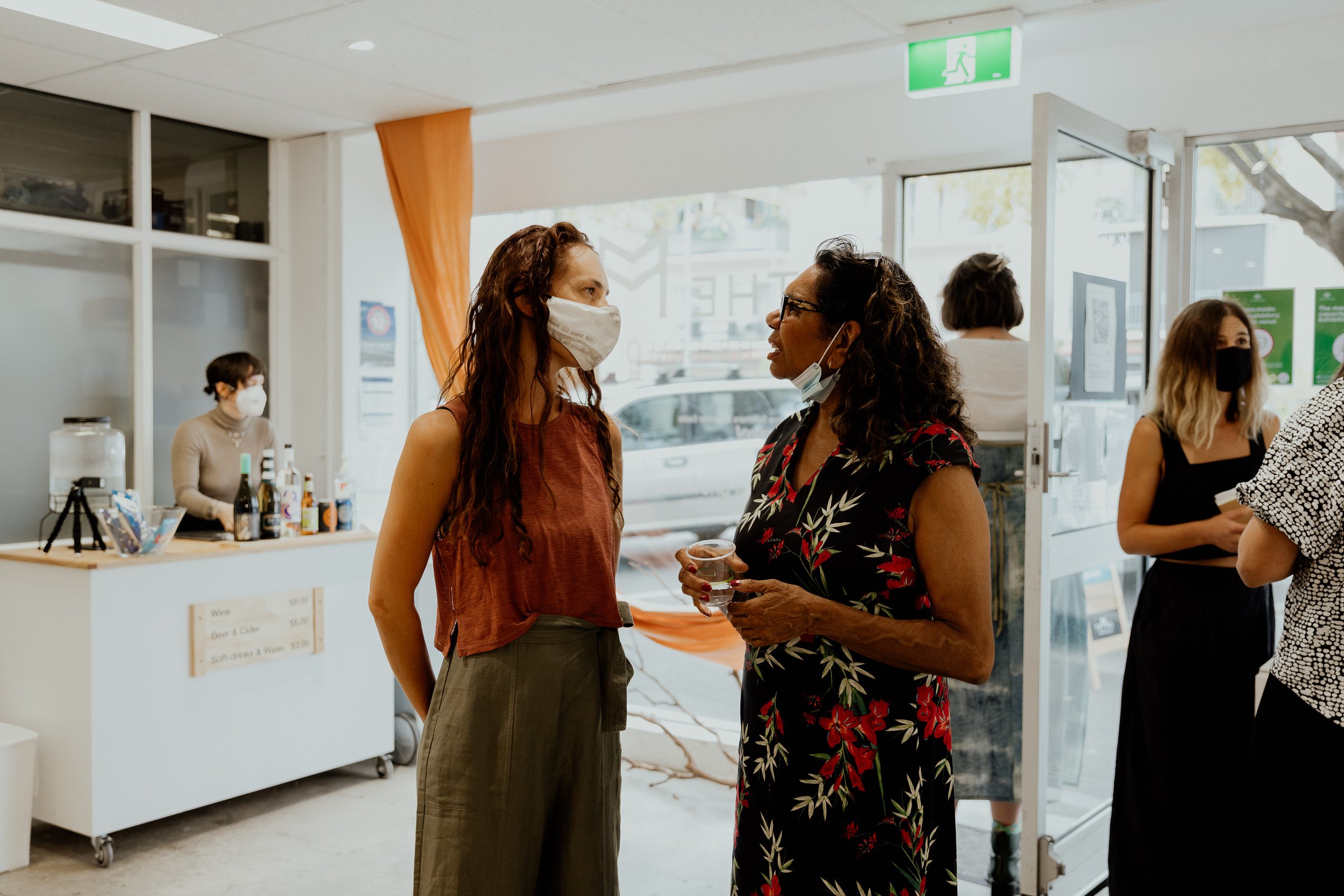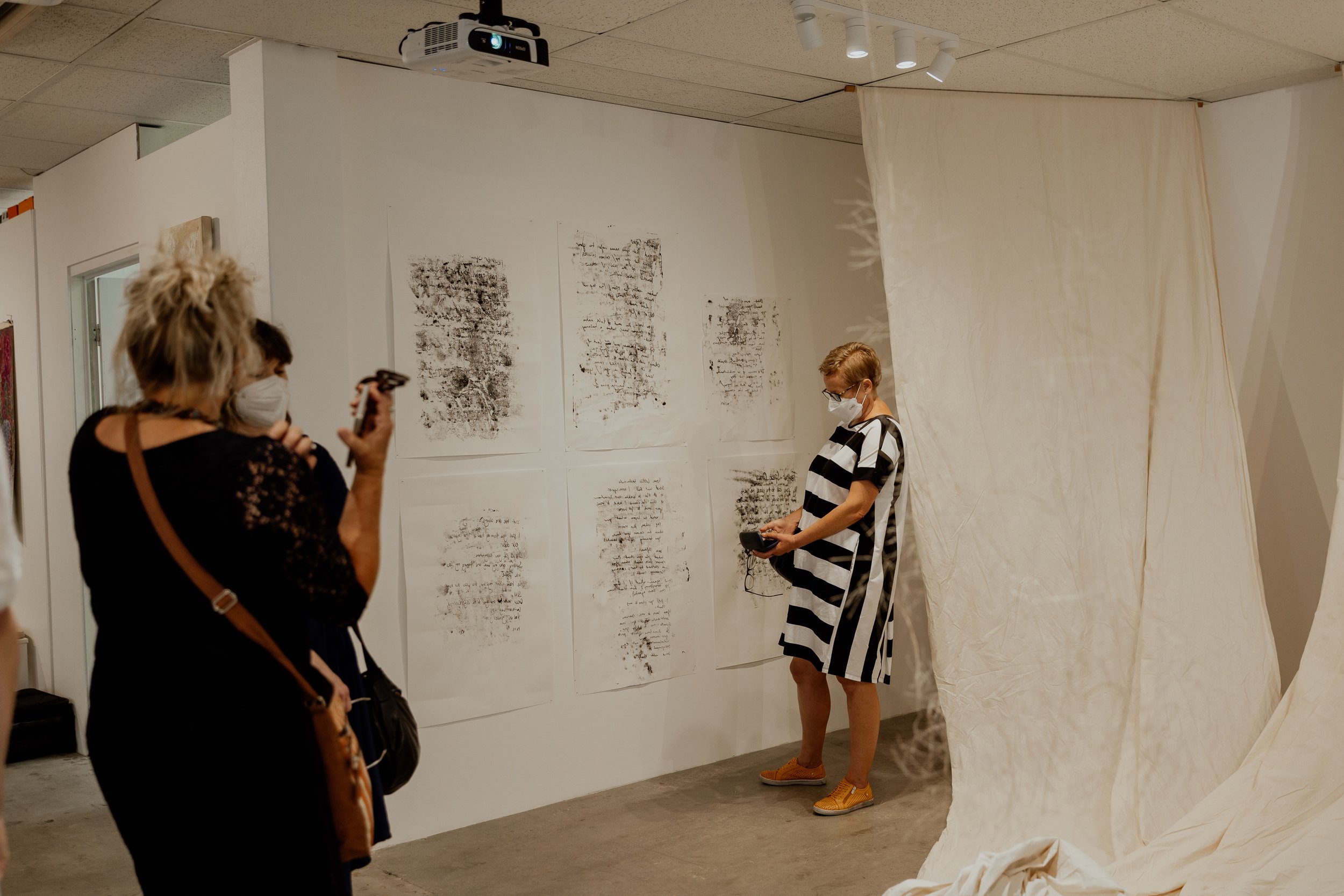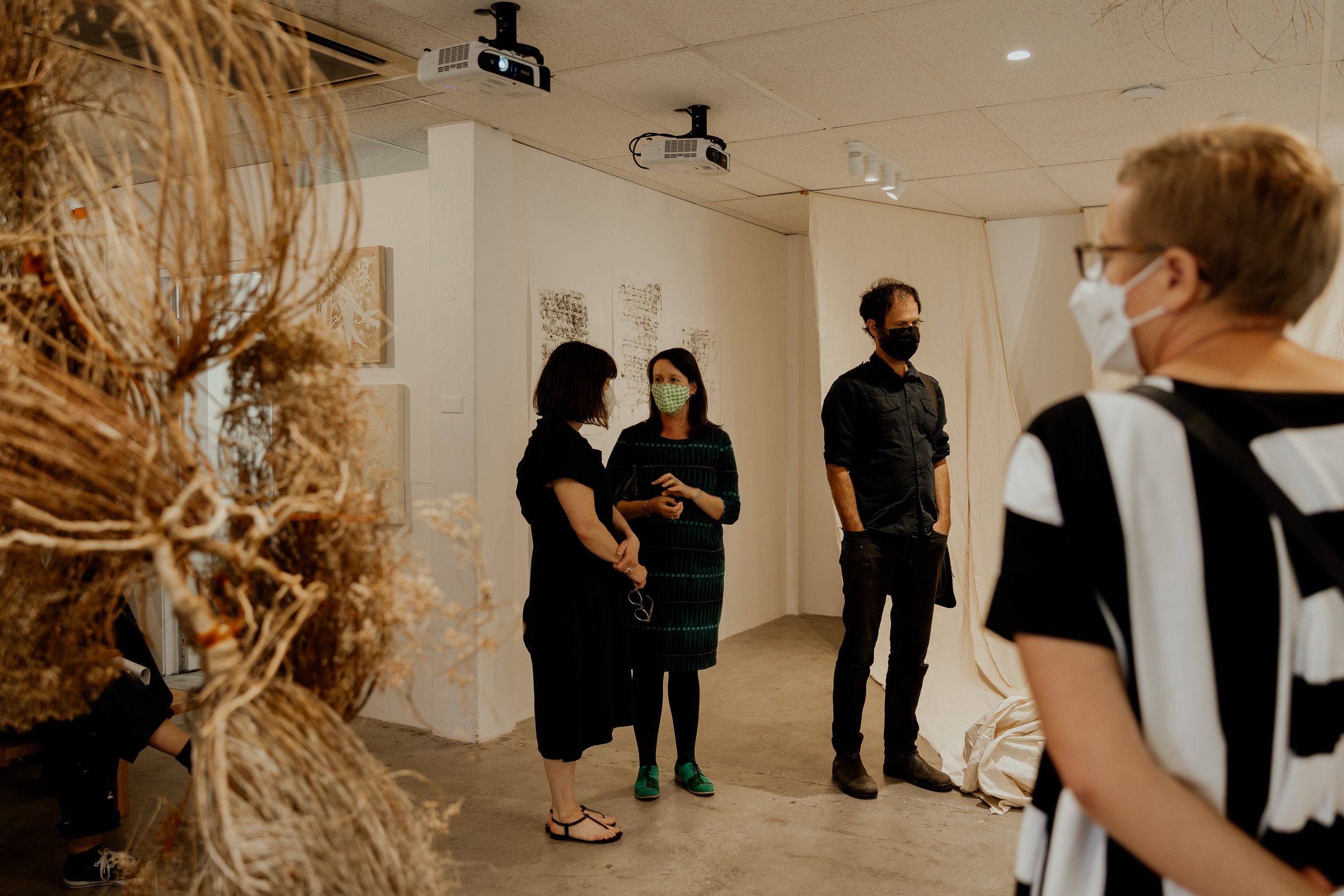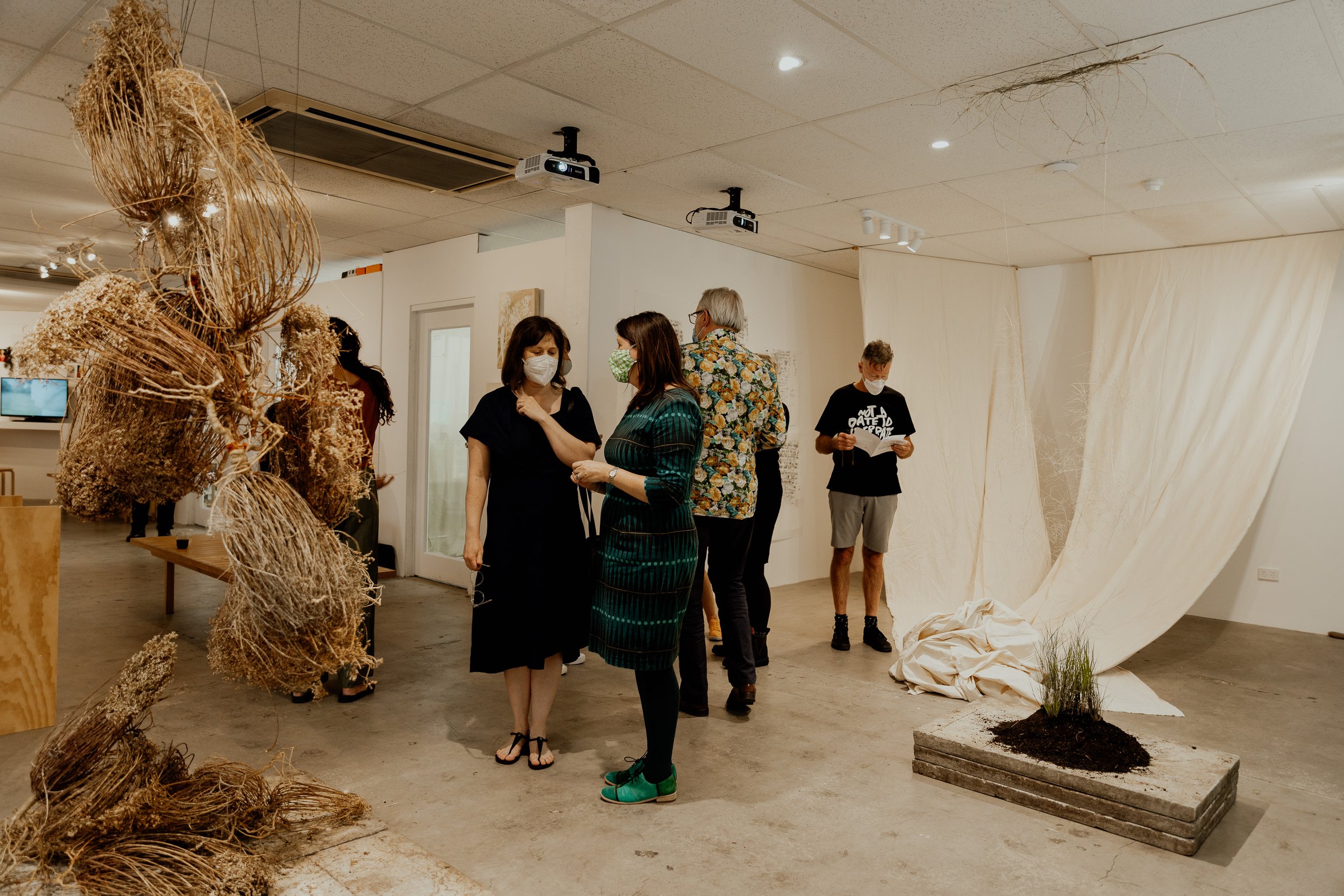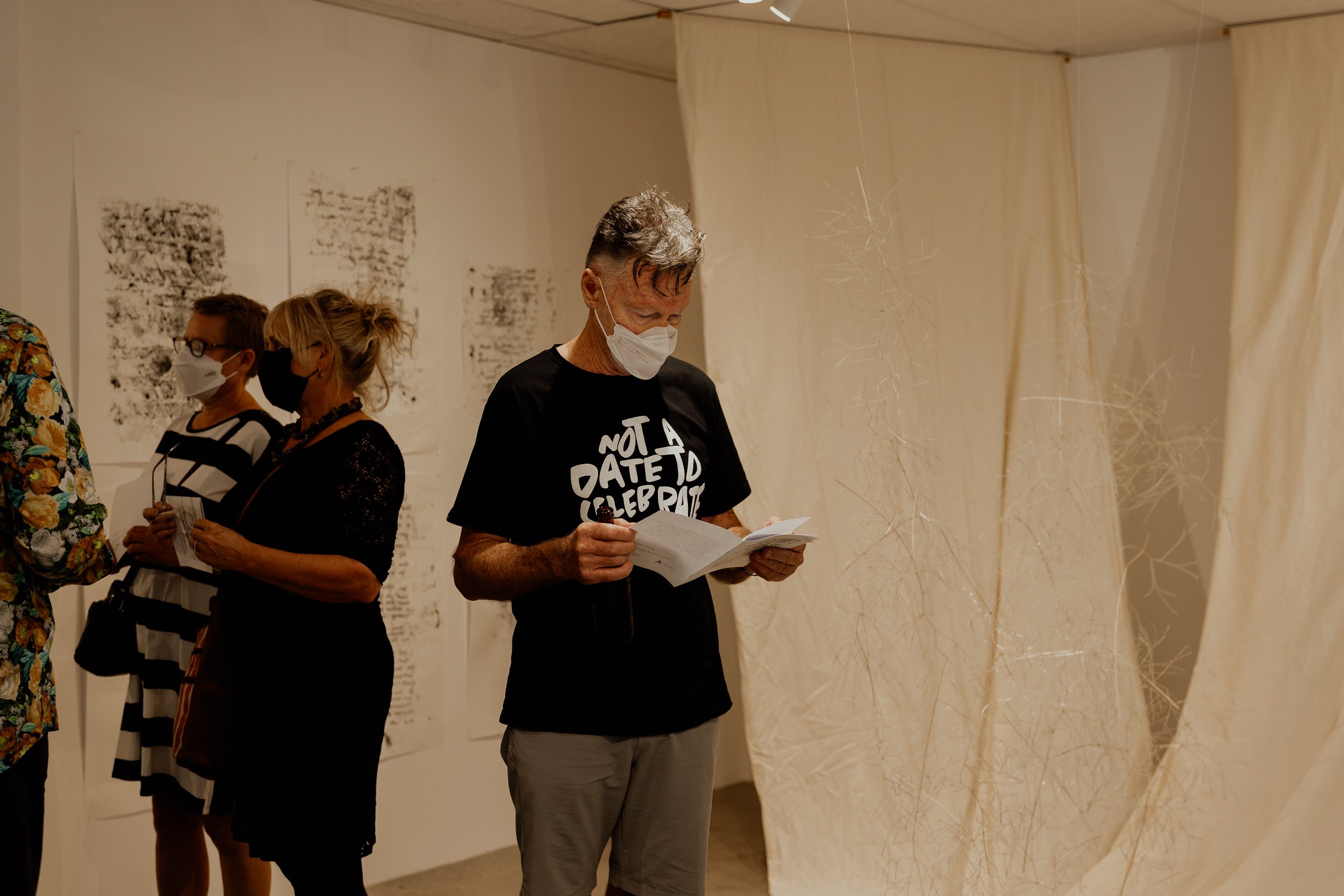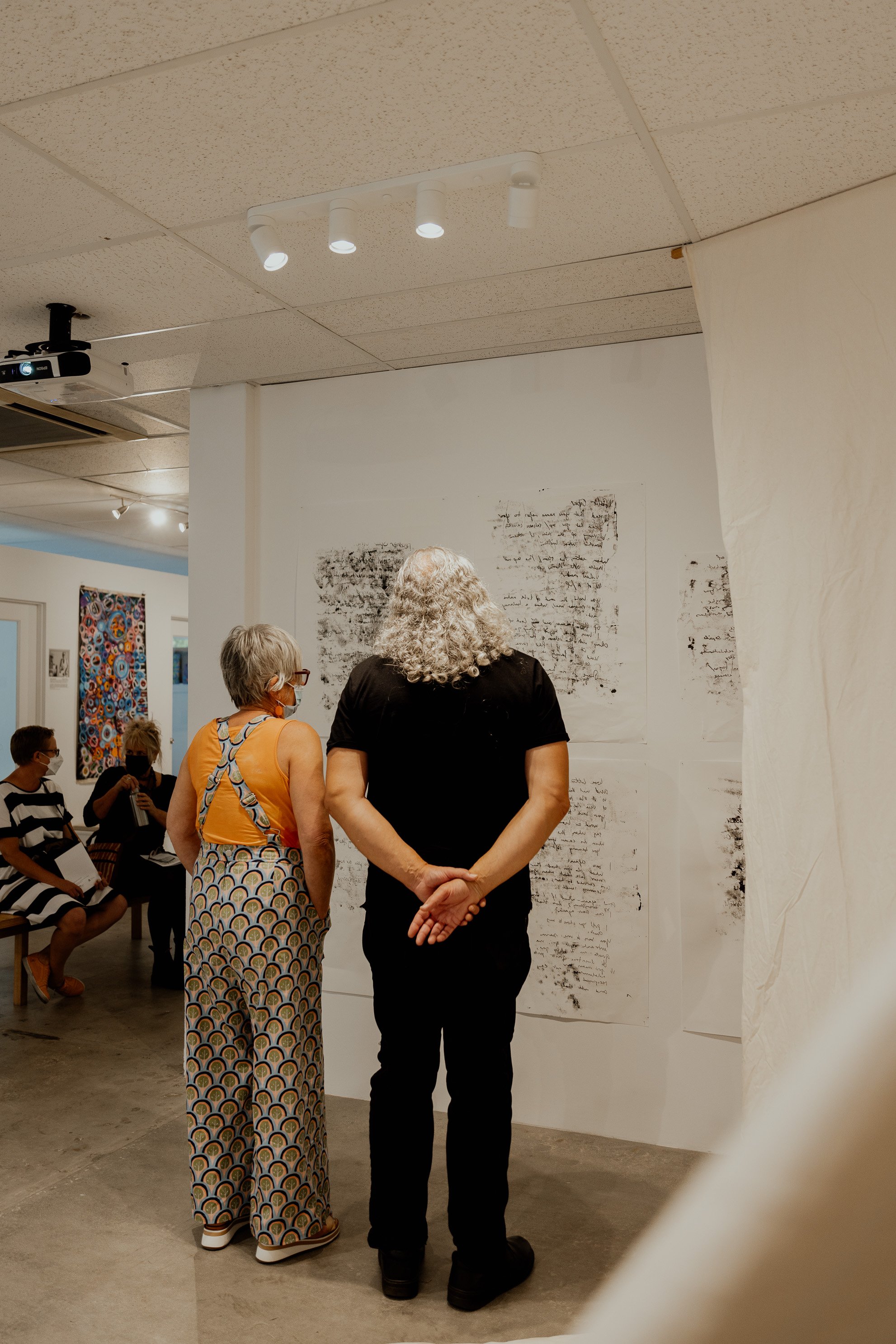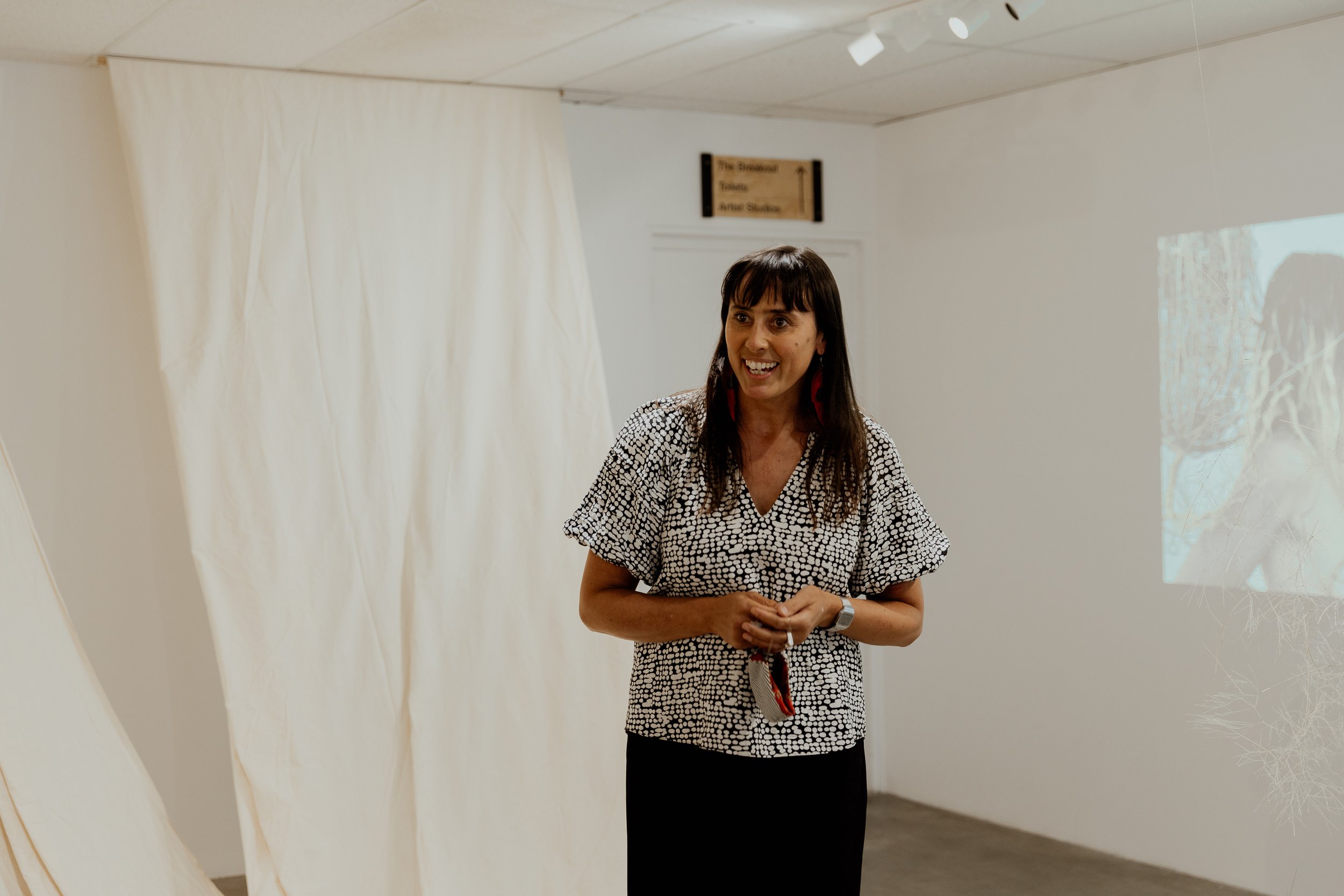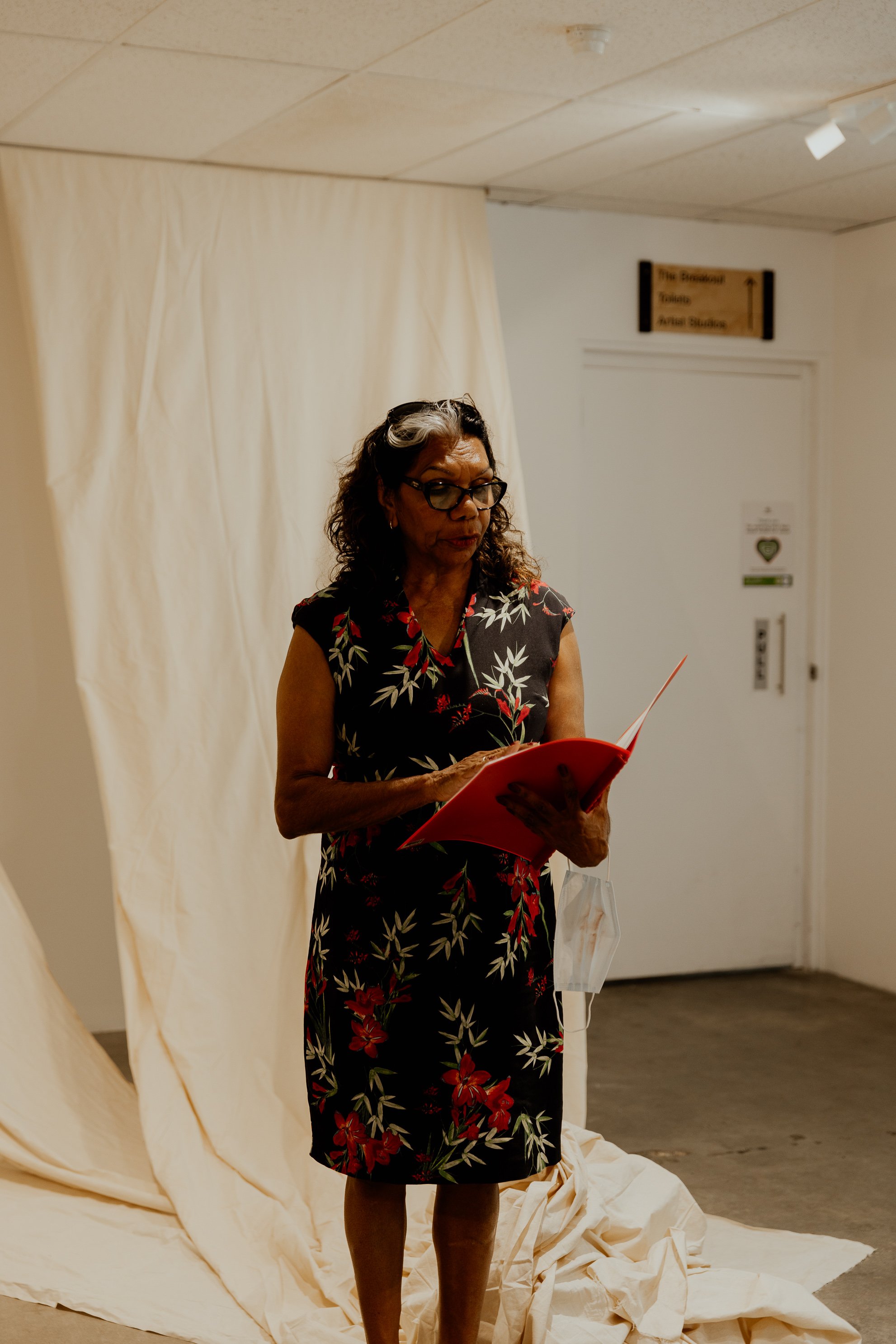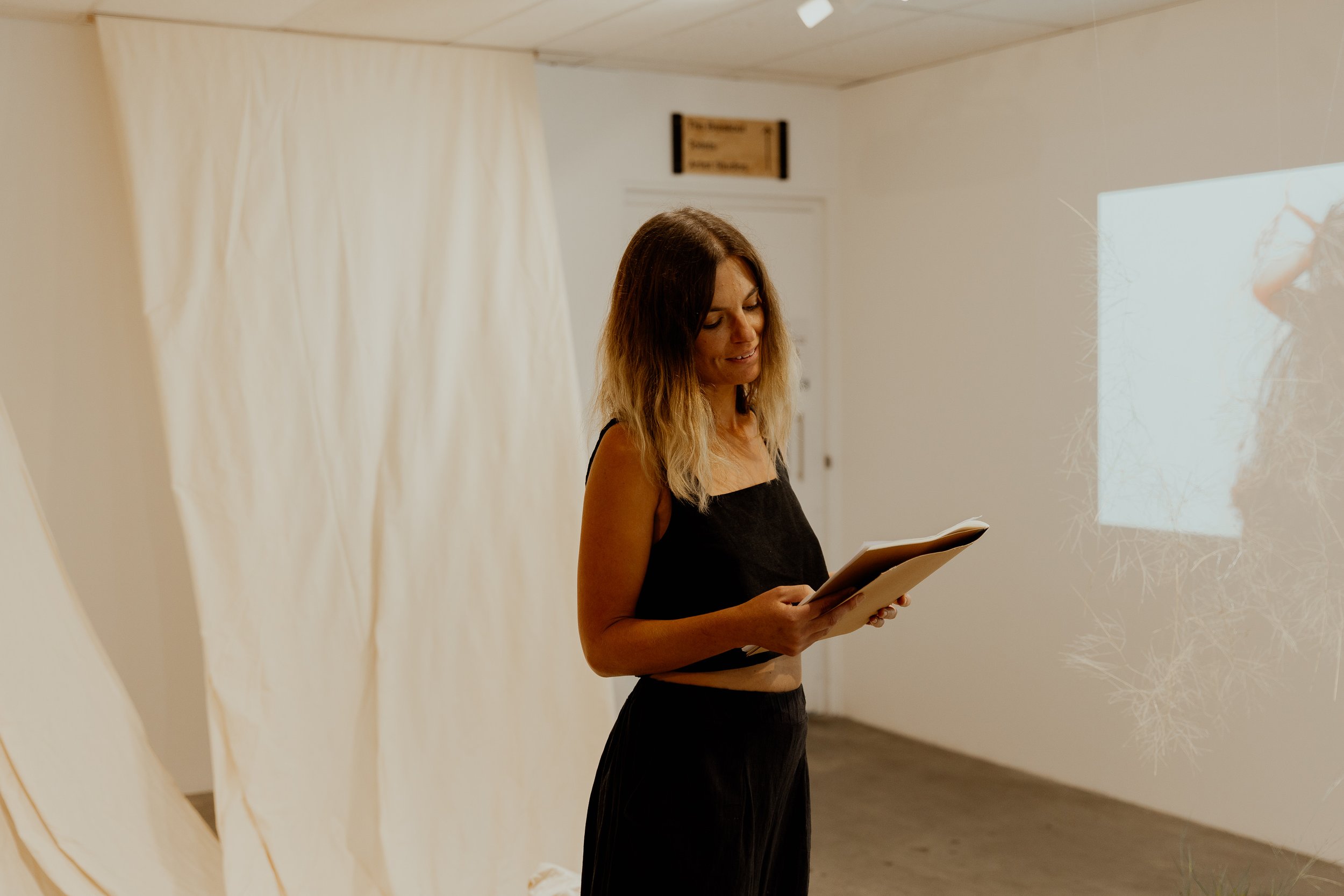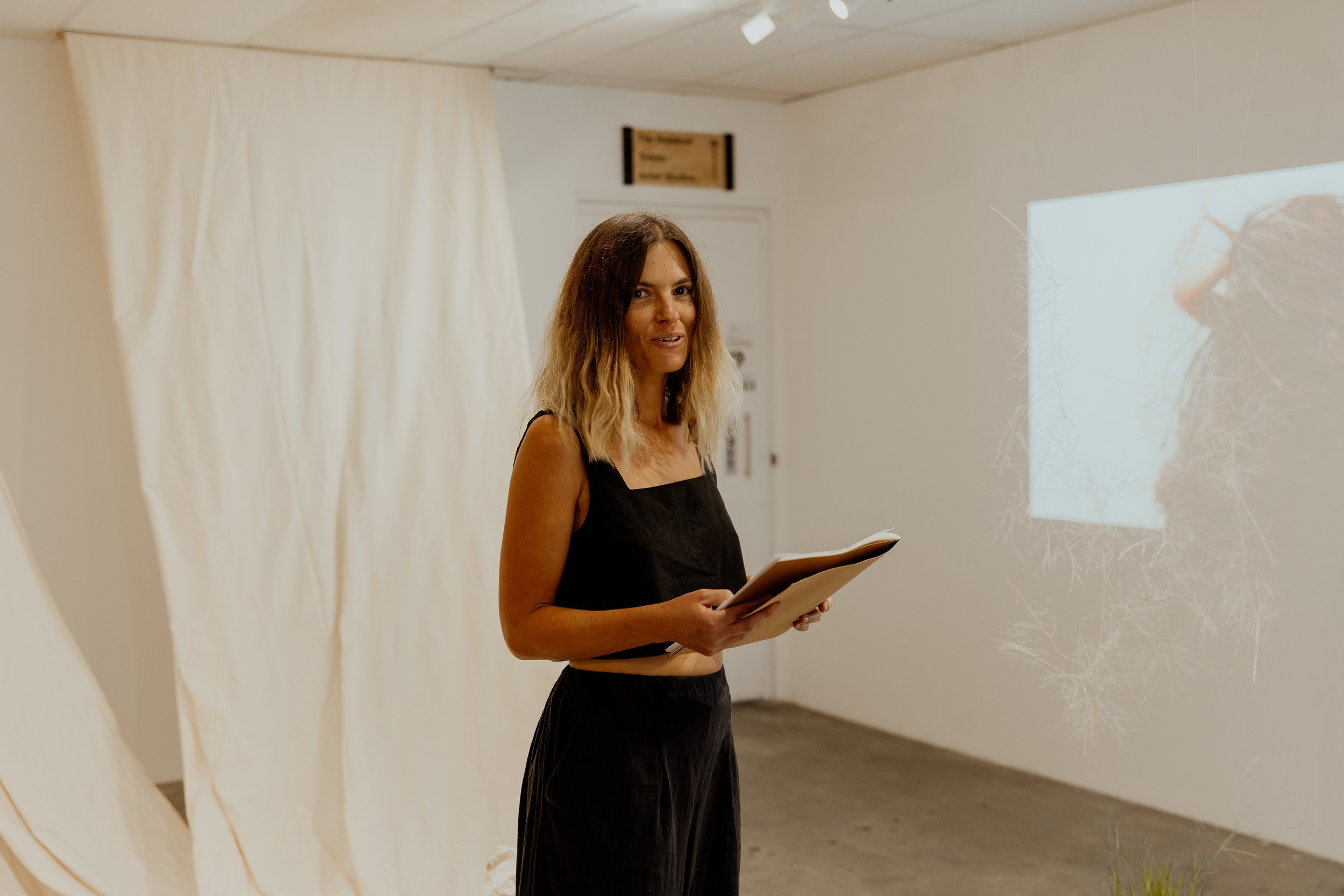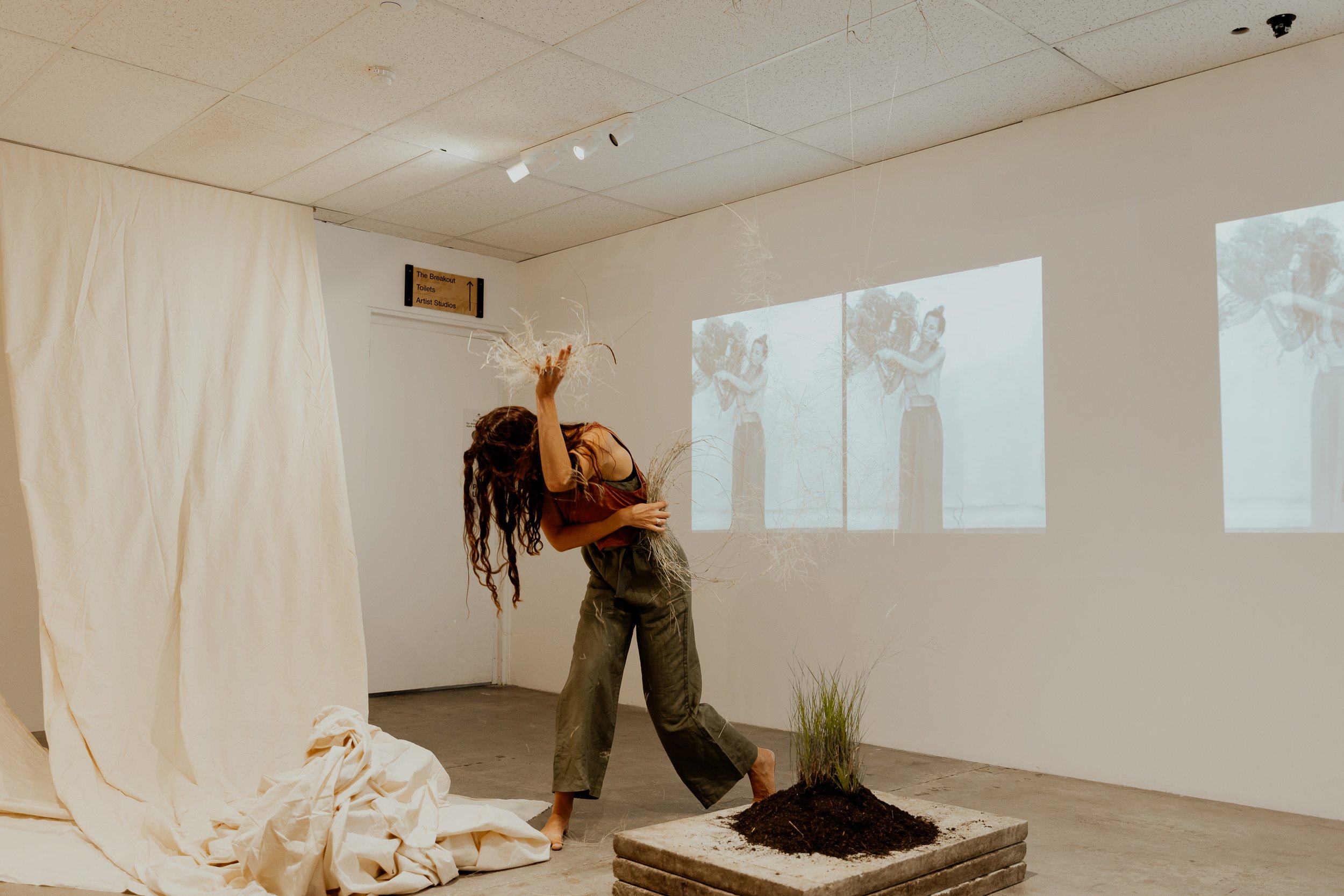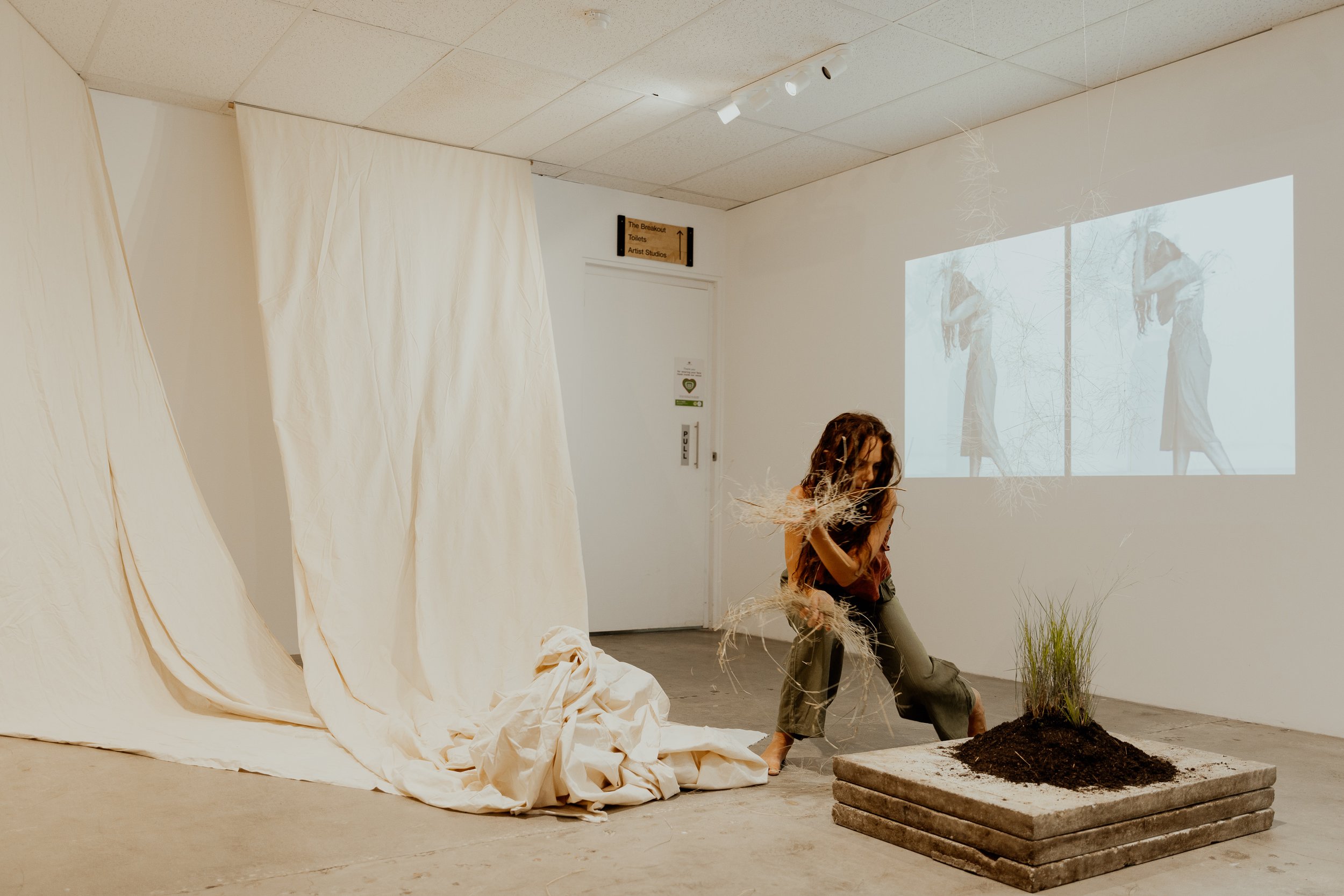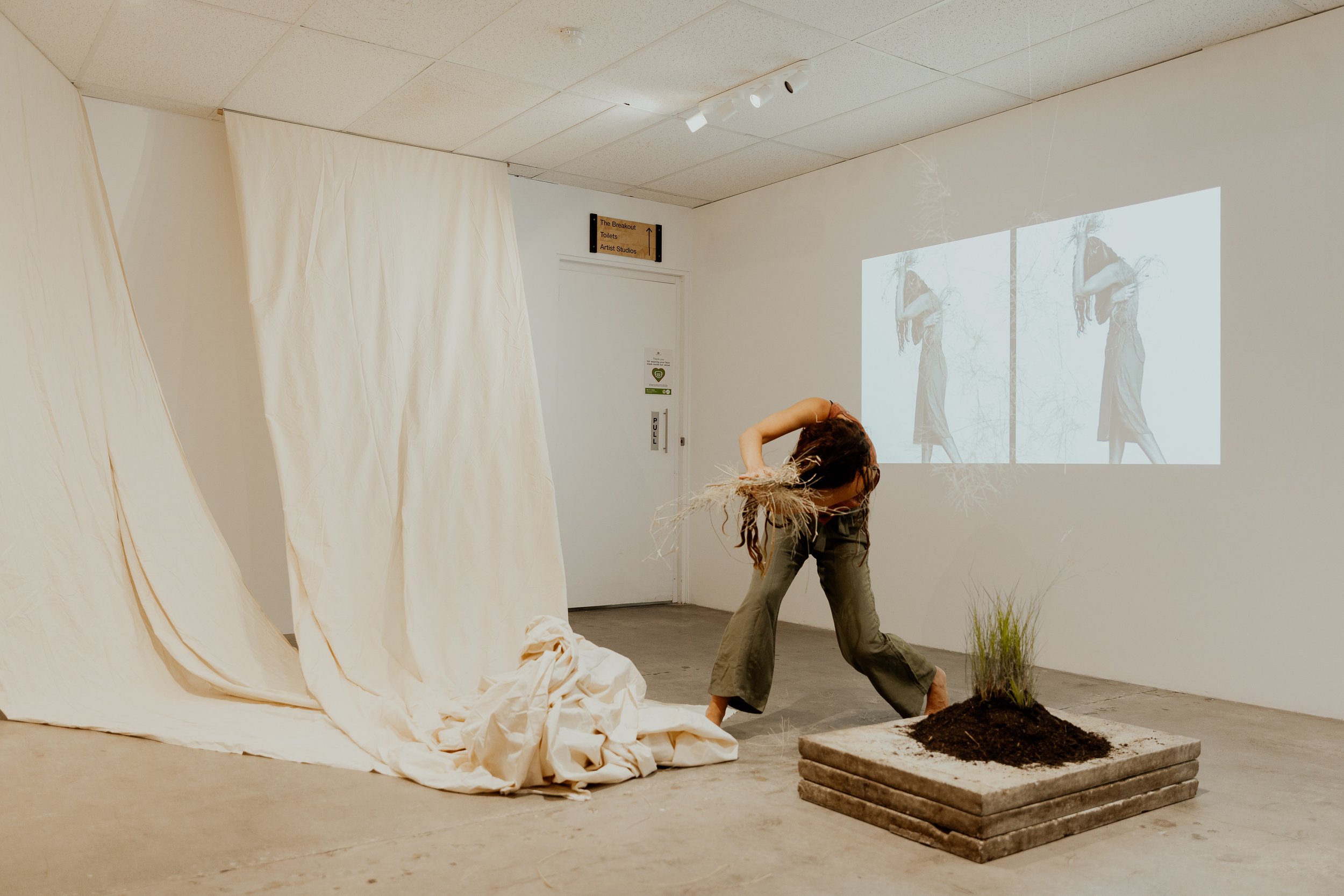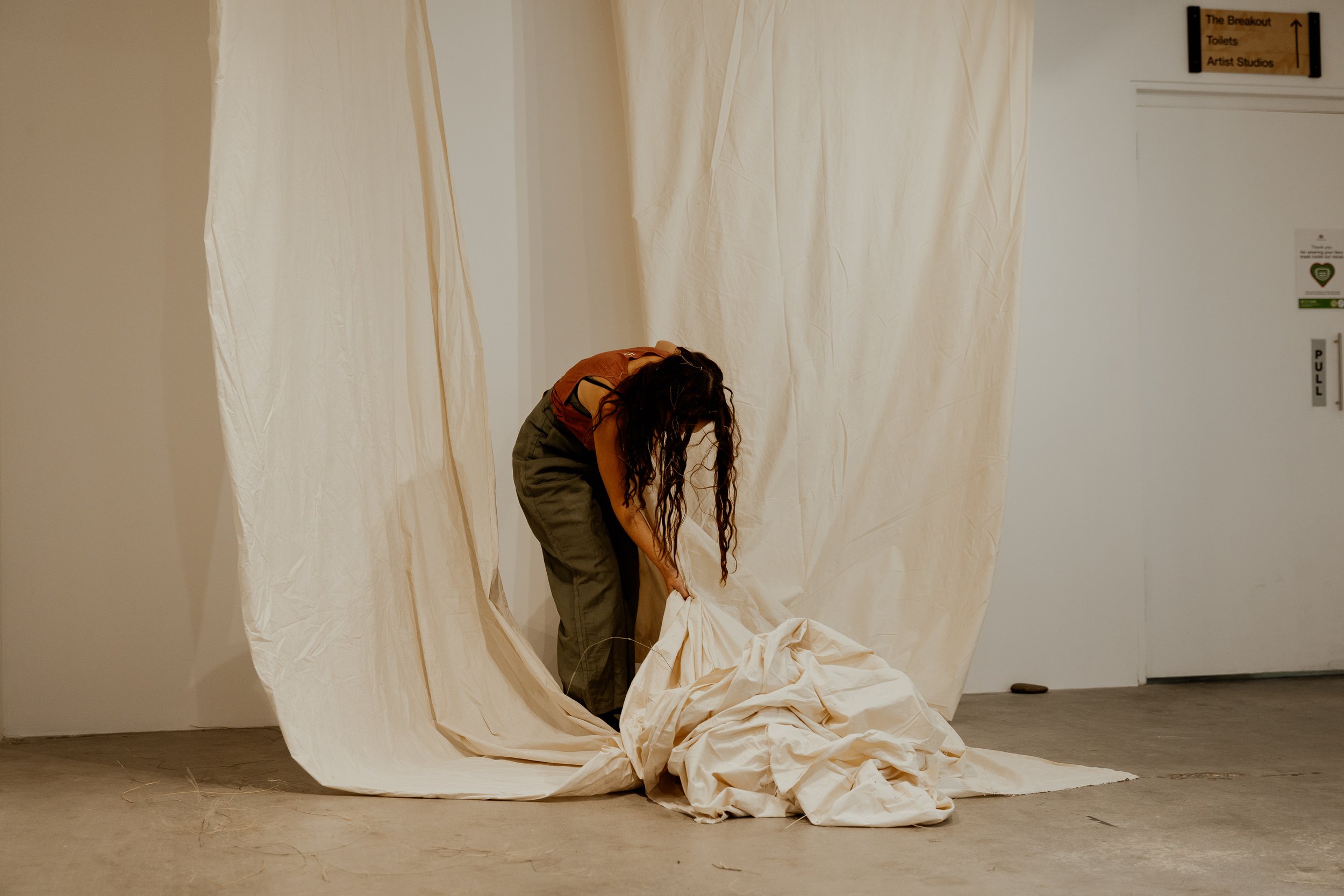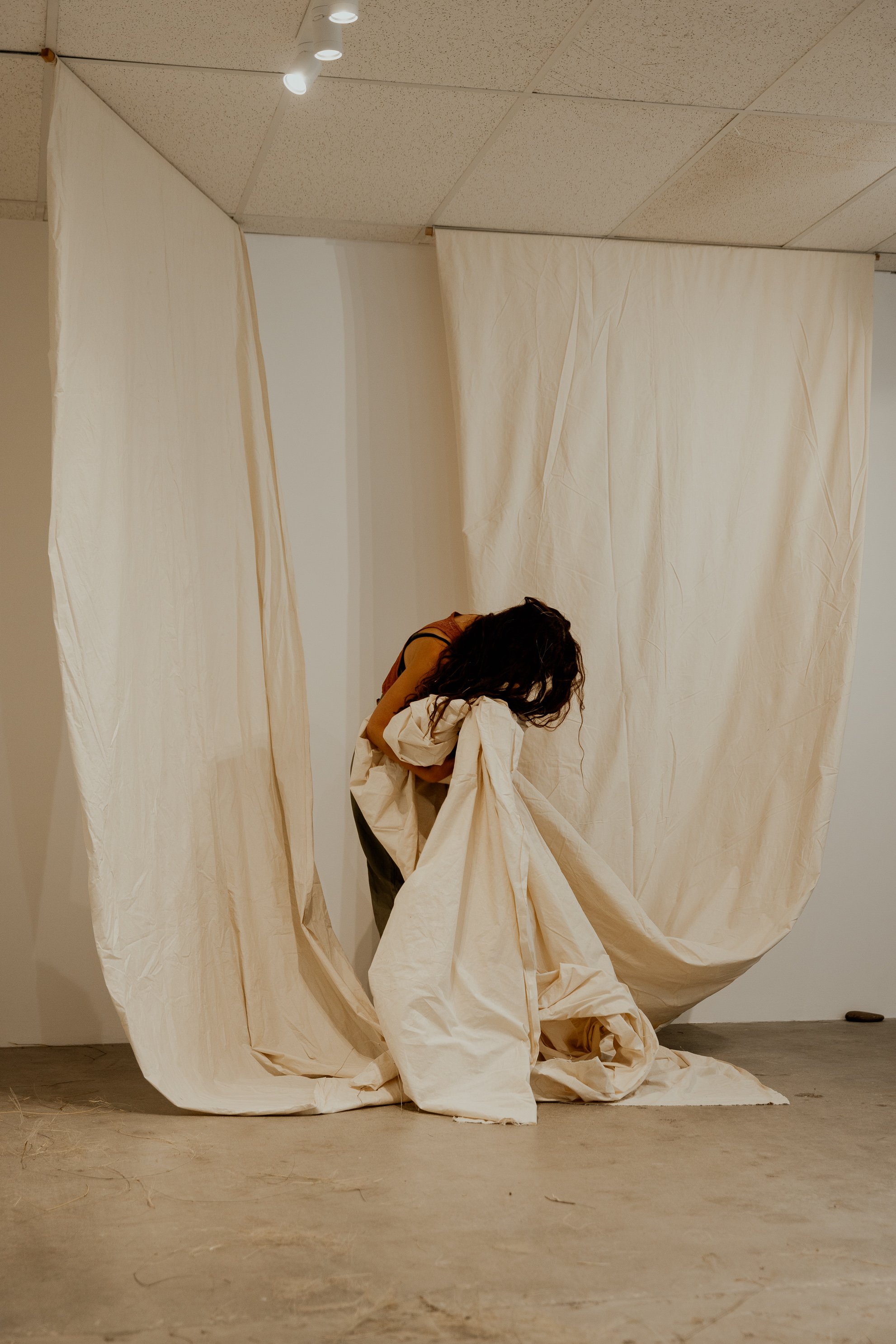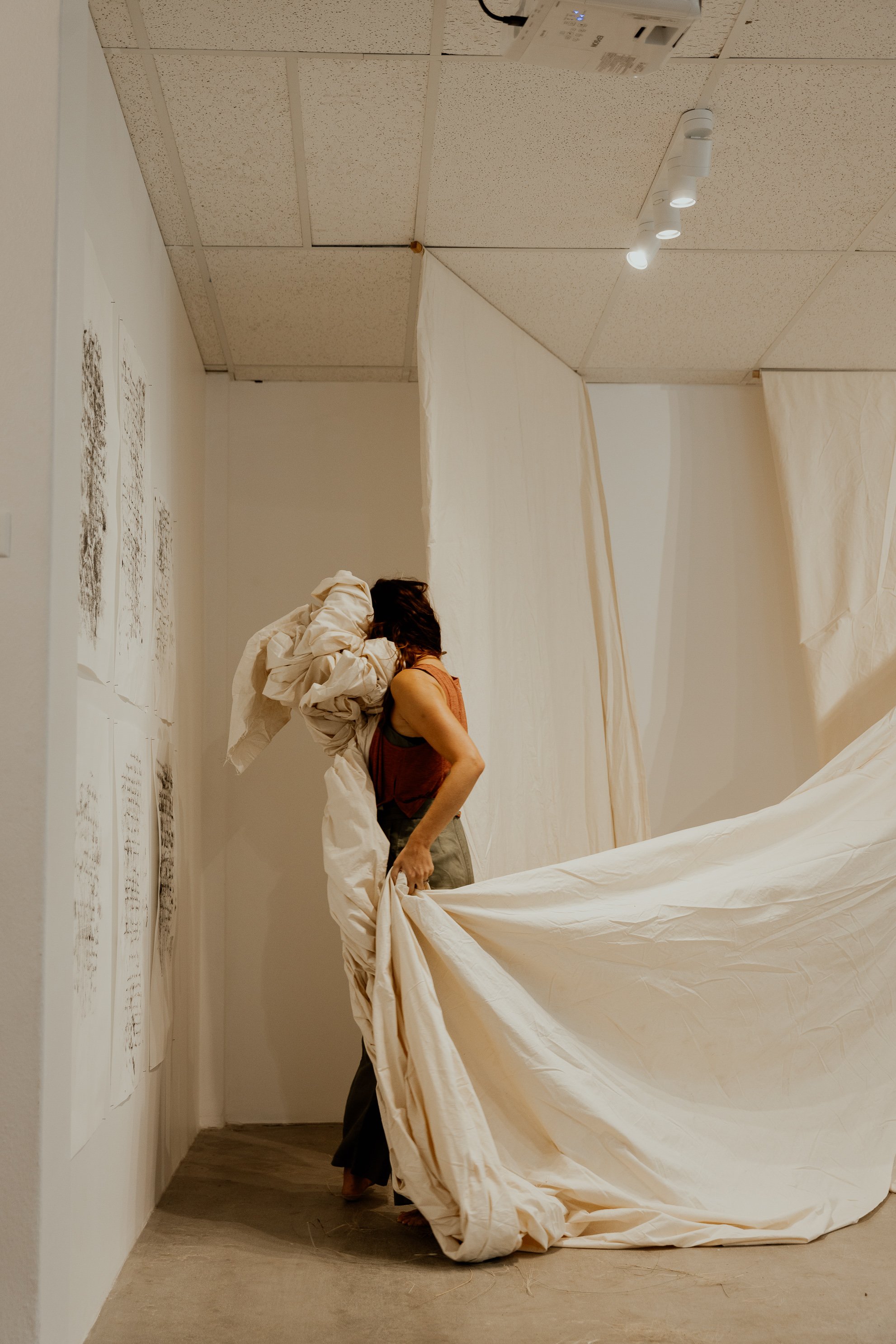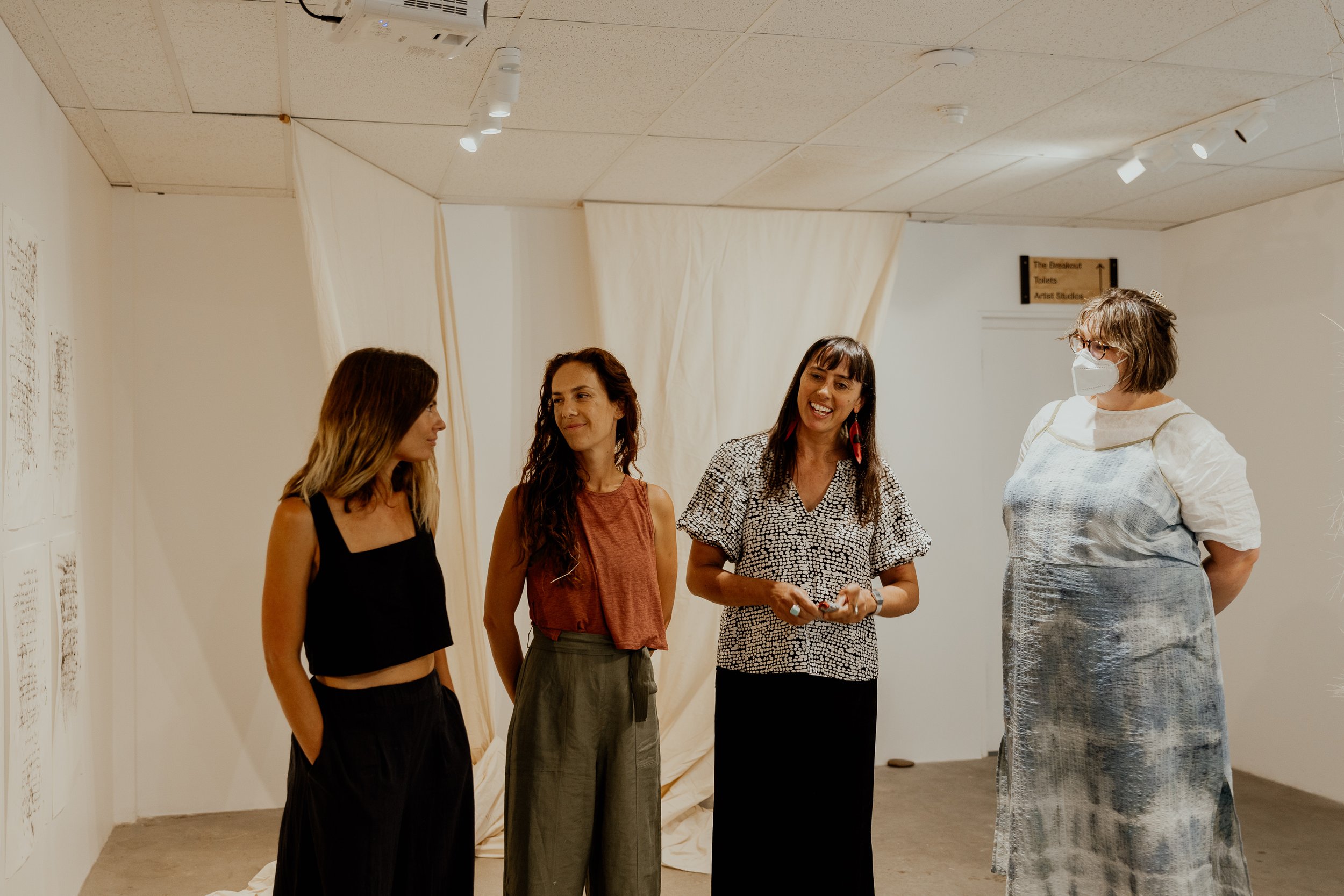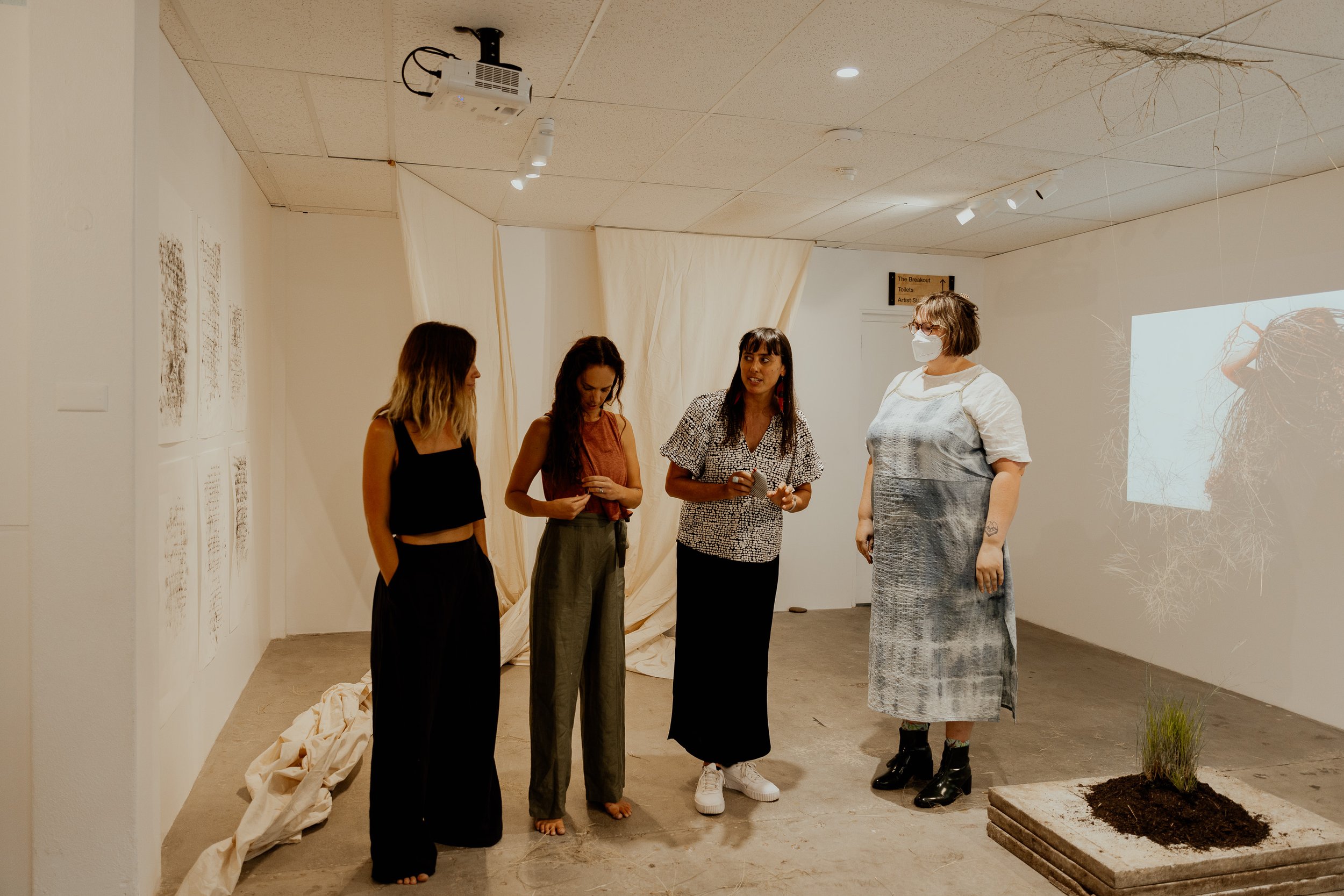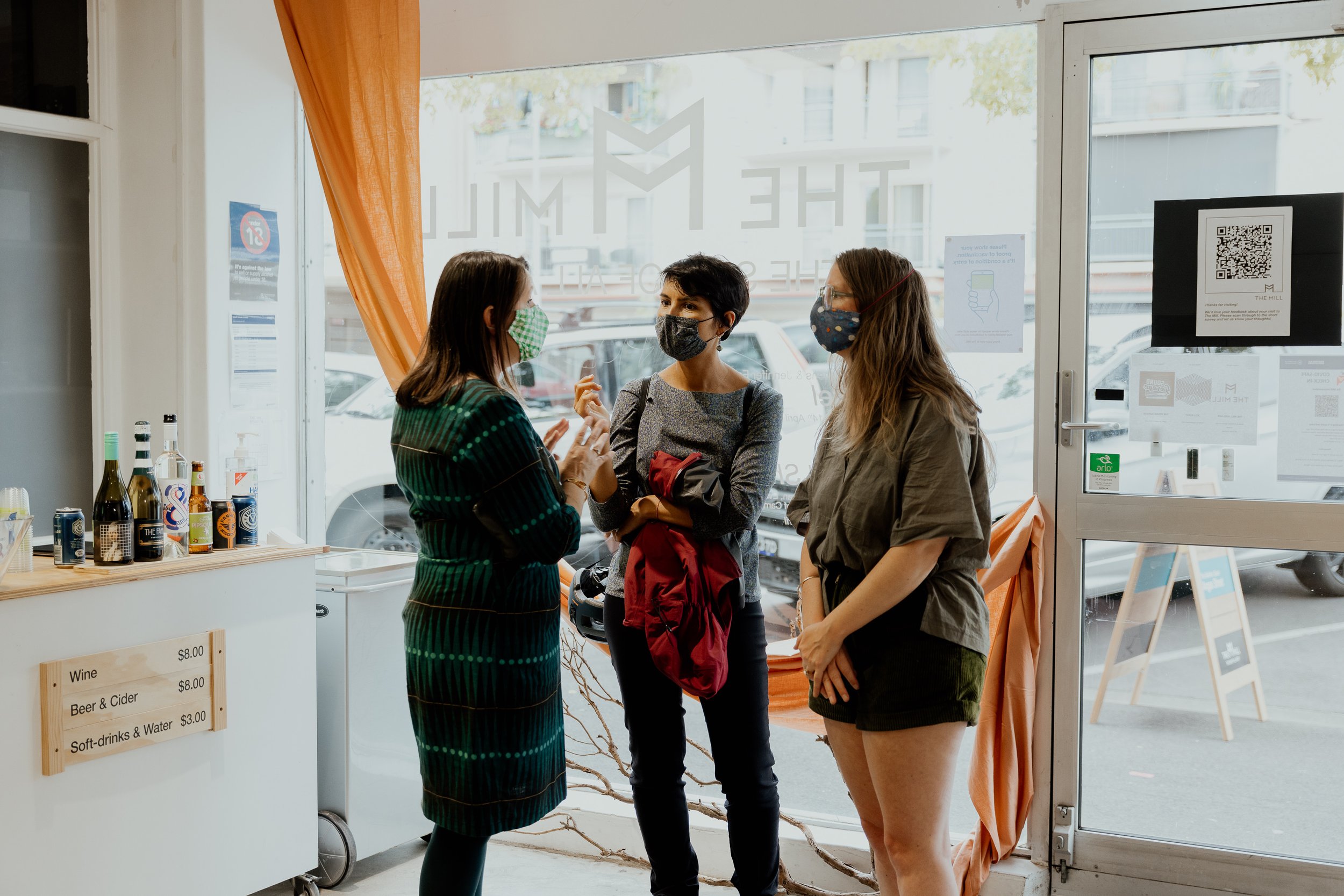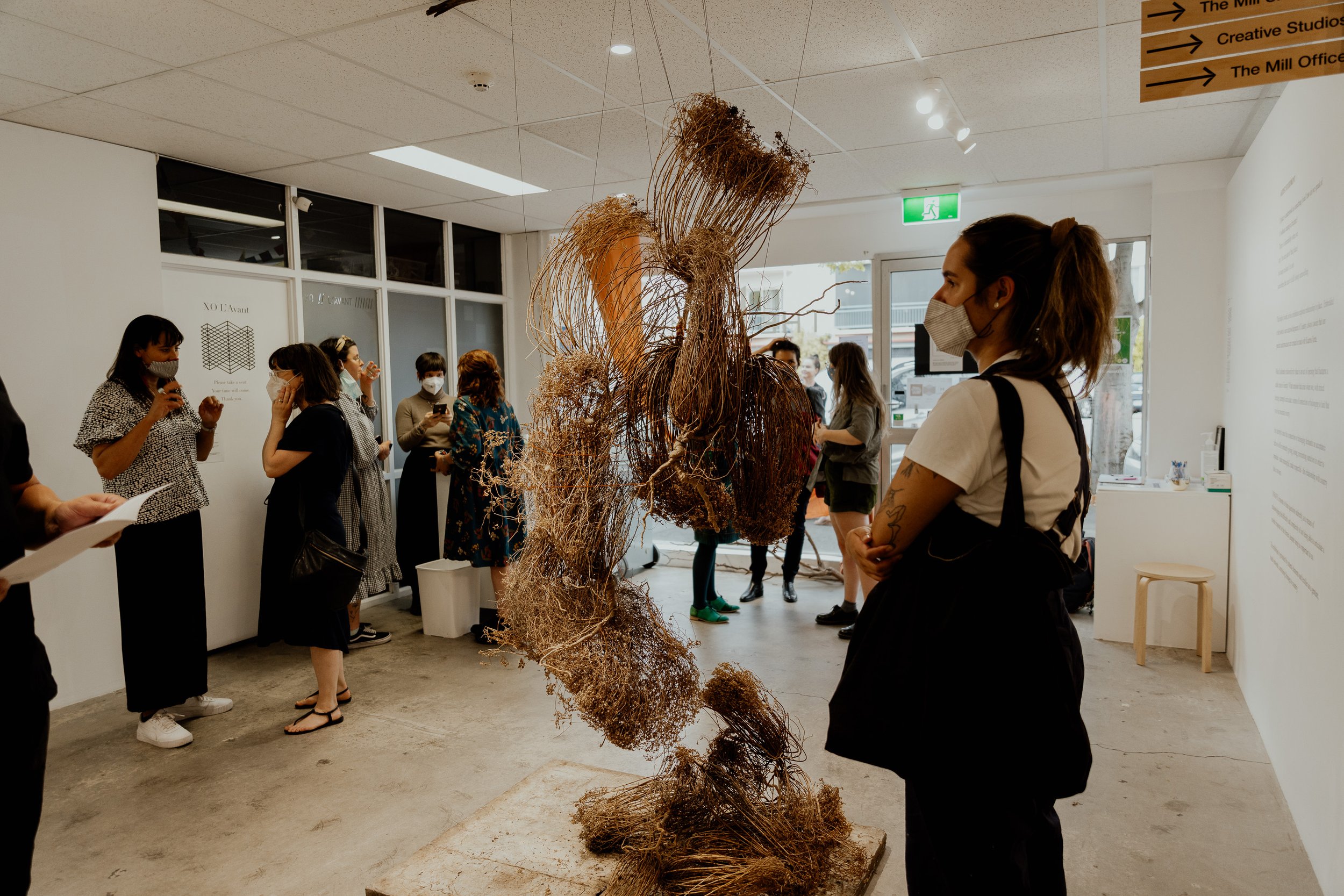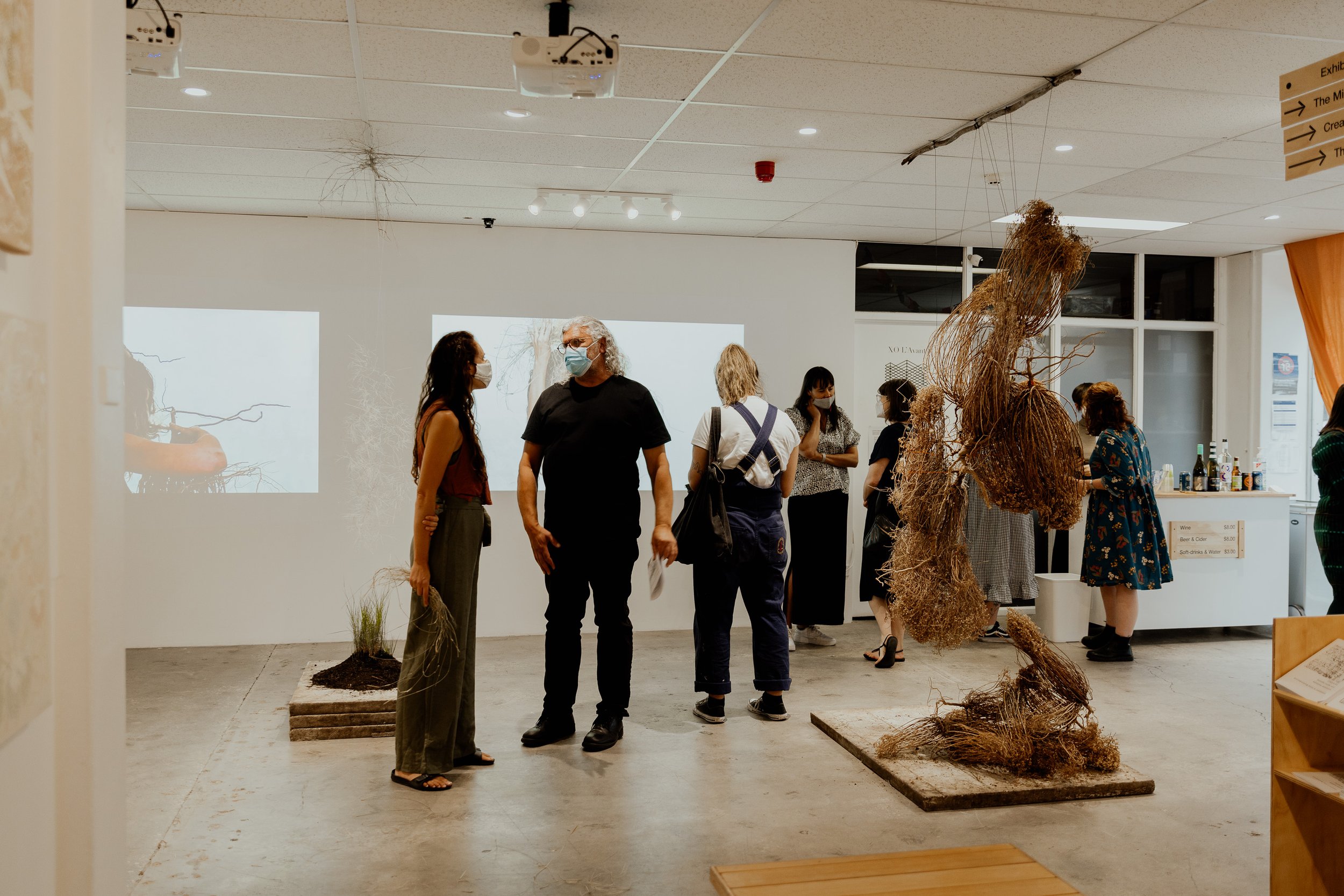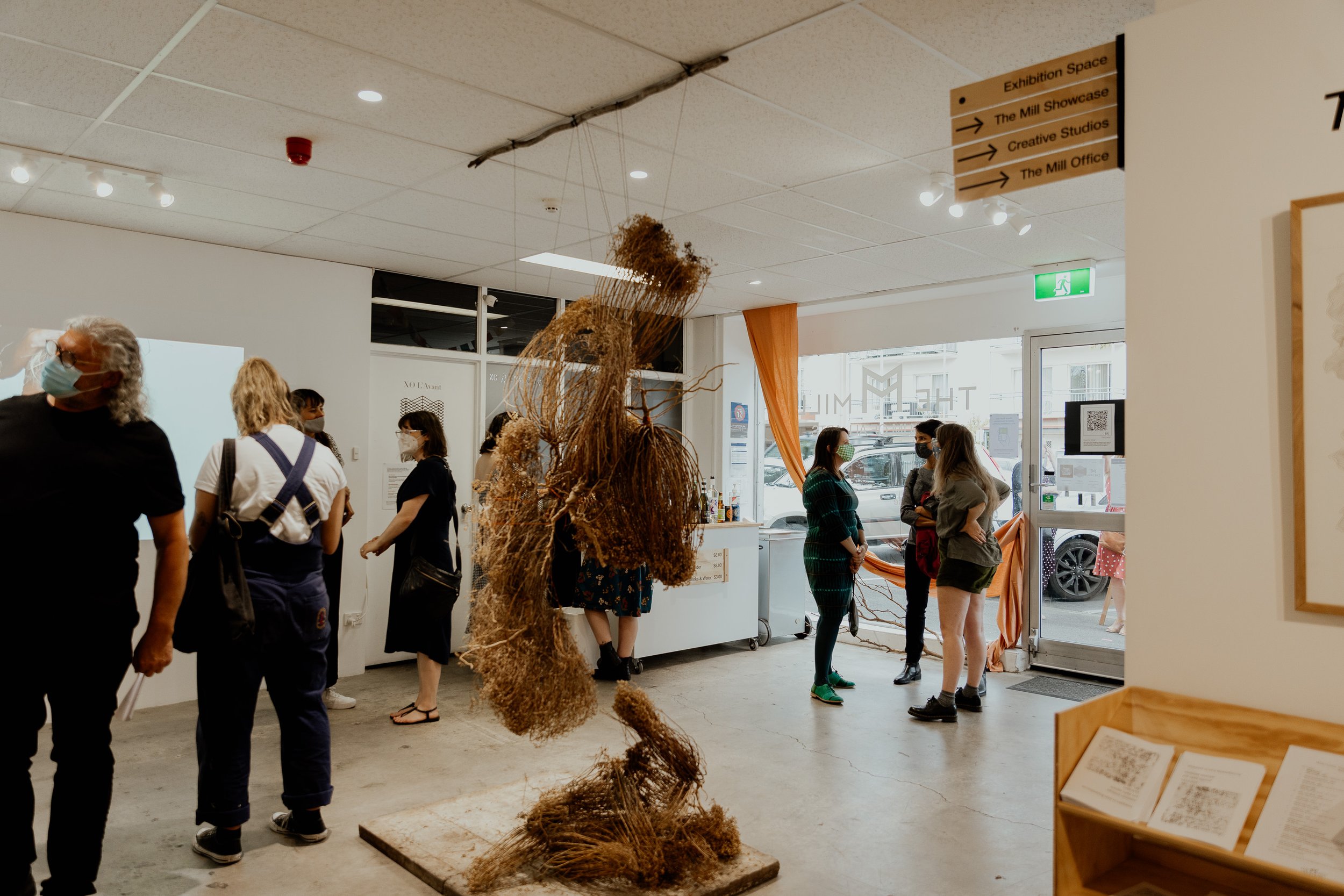From February to April 2022 The Mill welcomed South Australian based artist and writer Jennifer Eadie and dance practitioner, Adrianne Semmens to present their collaborative project Unravel.
The artists invite you to first read through their accompanying text, which can be dowloaded as a PDF from the linked image below, and then take time to look through the videos and photographic documentation of the exhibition.
This Virtual Gallery is an online offering to bring you into the space virtually.
(Images below: Daniel Marks)
Q&A with artists Adrianne Semmens and Jennifer Eadie
Hi, my name is Adele Sliuzas, I am the Visual Arts Curator at The Mill. I’d like to acknowledge the Kaurna people as the traditional custodians of the Country that this exhibition takes place on, and where I am privileged to live and work. It’s so great to be here in the Unravel exhibition, thank you so much to artists Adrianne Semmens and Jennifer Eadie for creating this exhibition and performances. We’re going to have a chat about your practices and some of the themes you have explored in this exhibition.
Lets start with hearing a little bit about yourselves, and how you came to begin this collaboration?
A&J—Jen and I thank The Mill for bringing us together – Katrina the Director of The Mill introduced us in 2019 whilst Jen was Writer in Residence and I was the Engage Program recipient. We discovered a shared interest and connection with each other’s work, which led to a first project, creating a text together for Delving into Dance/Critical Path Commission (2020). We were then eager to explore how the text’s dialogue could be explored and presented across our disciplines and were fortunate to undertake a Breakout Residency at The Mill (2020/21). The residency allowed for a creative development and exploration of text, movement, and installation, this in turn led to our collaboration on this exhibition.
A— I am a dance practitioner and descend from the Barkindji People of NSW. I enjoy working across performance, choreographic and dance education roles. Connection to place continues to be a central theme of my practice, explored in this collaboration and my own choreographic works: https://www.adriannesemmens.com/
J— I am an artist, writer, and academic currently living on Kaurna Country. I grew up on Taribelang Bunda Country. My creative work is interdisciplinary (text, installation, and performance), but always grounded in place: exploring the stories, bodies, and histories that emerge from place when it is recognized as living country rather than property or resource. Methodologically, my practice involves collating and then responding to site-based material. This material may take the form of text, bodies, archives, natural and man-made objects, textiles, recordings, and/or image: https://jennifereadie.cargo.site/
Adele: Place, belonging, and connection are key themes in the exhibition, and you have both taken personal journeys in order to present work that is considered and vulnerable, and opens a conversation for audiences to do the same. Can you tell us a little about how you came to this theme and what meaning it holds for both of you?
A— we connected through our discussions of place, belonging and connection. At the time of our connection I was considering my own relationship to place, having returned to Adelaide to make this my home, treading lightly and respectfully on Kaurna Country whilst acknowledging my pull and yearning for time and deeper connections to ancestral country.
J—I had only just moved to Adelaide-Kaurna country when we first met so I was still finding my feet here and was also in the process of tracing my heritage and encountering difficulties gaining any clarity about my ancestry. So, I was experiencing a sort of double dis-connection to place in this regard. It became obvious very quickly that we both recognized place and our relationship with it as central to our practice. From the beginning then, we have always understood and respected this shared vulnerability as point from which we create work together.
Adele: Creating a non-hierarchical collaborative relationship has been such an important focus of your work here. I wondered if you could both speak a bit about why that has been something that you have valued, and what things you have put in place to achieve it?
A— We respect and admire each other’s work and placed an emphasis throughout our collaboration to ensure our practice and individual disciplines initially sit together and in this project begin to entwine. I am really grateful for the new possibilities and mediums to present my work, opportunity for risks and extensive development that our ongoing collaboration has allowed for.
J—Yes, like Adrianne said, as a gesture of respect, our interest was in creating an exhibition that embodied both of our practices (text, art, and movement). Bringing different disciplines together means you see things in unexpected or new ways. We are both drawn to natural material and the aesthetic that emerges when one places the body in relation to that material – so this shared interest is what guided us. Both of us are honest and non-judgemental which removes the awkward diplomacy that can sometimes characterise collaboration.
Adele: Can you each speak about the materials that you have brought into the space and how you have worked with them? And about the relationship between material, body and place.
J&A—The exhibition is grounded by natural elements and textiles as a gesture, hands outwards, continuing lineage to country.
A— Our interest in material began during our residency, eager to use the fabric to designate a space/place. We experimented with cloth to depict our care of place, fragility and lineage. For this exhibition and our focus on our relationship to our current homes, here on Kaurna Yarta, I was interested in using the beautiful feather spear grass in my front yard.
J—The materials are our means of exploring the questions that inform our work: ‘what if authentic relationship to place is an act of opening that fractures a stable sense of identity’ and; ‘what tensions that arise when we, with mixed heritage, attempt to articulate a sense of connection or belonging to land that is not our ancestral country.’ UNRAVEL responds to these questions indirectly, as a means of acknowledging the difficulty of not being able to articulate a resolute response. We decided to explore the question via our connection with the natural environment where we live – in my case that with the False Caper plants that grow in the sand dunes across from where I live and for Adrianne, it was the spear grass that grows in her yard.
Photographs to each other when we had decided on the plant we would focus on for the exhibition:
The sculptures were a means of imbuing-returning a sort of energy back into the plants as a gesture of respect and care for being part of our process. For the images – we wanted to create a dynamic where the plant and our body are in dialogue, as a means of breaking down borders between us and country:
Early work-in-progress images:
Adele: Text sits in the exhibition space in the form of mono prints and an artist statement, and also in the catalogue which you have both contributed writing to. I’d love to know a bit about the process of forming these works, and how you worked together on them.
J— I wrote the poem in the artist statement after first meeting Adrianne, as a means of trying to articulate what I felt was our shared experience – a sense of unravelling that occurs when one tries to articulate identity or connection to place. The description and poems that are included in the ‘accompanying text’ and monoprints were our attempt to authentically engage with Kaurna country via those singular plants who form part of our home: what is their history, what have they witnessed, if we were to have a yarn with them, how would it go? The monoprints are these ‘love letters’ in printed form:
A— Our text is a continuation of our ongoing dialogue, sharing thoughts, posing questioning, refining ideas. I appreciated Jen’s lead in our creation of text and the opportunity to explore my own writing through this process, each writing a poem and presenting it as a mono print. This was a new experience and presentation of my work, enabled through the support and sharing of Jen.
Thank you’s and good byes!
J&A – we would like to thank The Mill again for giving us the space and care to create our exhibition and for everyone who has gotten in touch with feedback. We would also like to thank Rosemary Wanganeen again for welcoming us to her country and for her words in conversations since, which carry such immense strength and kindness.
